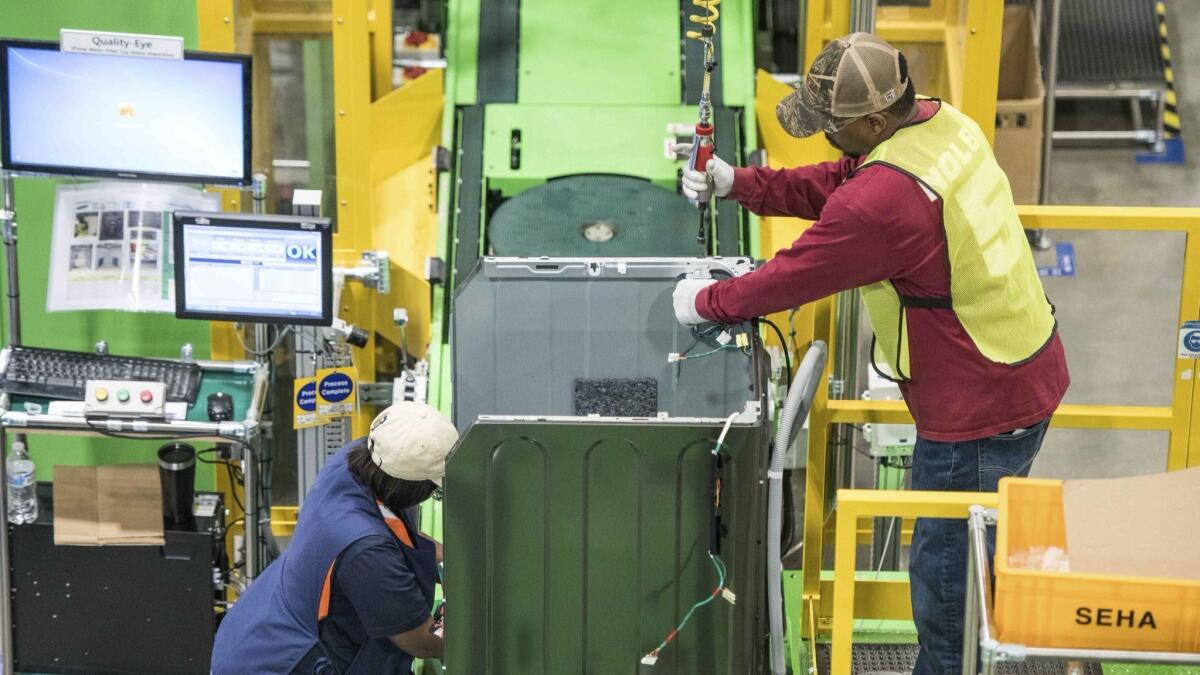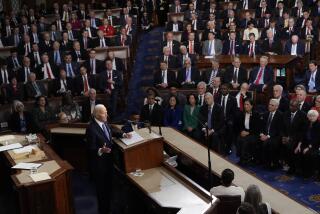U.S. job growth slows sharply; unemployment rate stays at 4.1%

Job growth slowed sharply in March from the pace of recent months as employers in most sectors took a breather in hiring.
Wage gains went up only slightly last month even though businesses are finding it increasingly harder to attract qualified workers and more people are leaving their jobs voluntarily.
The nation’s unemployment rate remained at a 17-year low of 4.1% for the sixth straight month, the Labor Department said Friday.
There was no indication that the Trump administration’s brewing trade war with China, which has jolted stock markets in recent weeks, had taken a bite out of hiring.
Although last month’s net job creation of 103,000 was well below analysts’ forecasts, economists instead attributed much of the slowdown to a payback for the unusually big burst of 326,000 new positions added in February. Milder than usual weather in February had bolstered construction payrolls, but in March that partially reversed.
American manufacturers, meanwhile, kept adding a healthy number of jobs last month.
Most experts took the overall disappointing job numbers in stride, given that they were just one month’s data. For the entire first quarter, job growth has averaged about 202,000 a month, enough to keep up with the growing workforce population — and then some.
“The strong job market does appear to be drawing back some people who have been out of the labor force for a significant time,” Federal Reserve Chairman Jerome Powell said Friday. Those people include workers who had previously reported a disability, he added. “Anecdotal reports indicate that employers are increasingly willing to take on and train workers they would not have considered in the past.”
Speaking in Chicago after the release of the jobs report, Powell said that the Fed expects the employment situation to remain strong, suggesting that the central bank will carry out its telegraphed plan to keep raising interest rates gradually, two or perhaps three more times this year.
Powell said that he and his colleagues discussed the trade situation when they met about two weeks ago, but indicated that it was too early to speak of implications for the economic outlook. So far, Trump has threatened to slap tariffs on as much as $150 billion in Chinese goods, and Beijing has said it would respond commensurately if that happened.
Beijing responds forcefully to Trump’s escalating threats, raising risks of all-out trade war »
Carl Tannenbaum, chief economist at Northern Trust in Chicago, agreed with Powell that it is too early to know what the impact of announced tariffs will be on economic activity and inflation. But he added: “In my view, if we get into a tariff tussle, it would be the worst scenario for the Fed: It could diminish growth and increase inflation. Those environments make it tough to set policy.”
Although the tariffs would not take effect until June at the earliest, Bernard Baumohl, chief global economist at the Economic Outlook Group, saw in the disappointing March jobs growth an early sign “of an economy that is struggling with uncertainty of what lies ahead.”
“The question that looms large now is how trade talks will impact hiring in the second quarter,” he said in a note warning of the economy “now entering a treacherous phase.”
“It has had a nice marathon run since June of 2009,” Baumohl said of the beginning of the current economic expansion. “But economic and political headwinds are increasing. The [Republican] tax cuts many believed would add fresh firepower to business may yield little if CEOs and consumers become increasingly alarmed about the path of U.S. trade policy and the potential impact that could have on an aging expansion.”
Friday’s jobs report showed continued healthy gains in manufacturing and mining, two industries that Trump has sought to bolster and are also getting a boost from a stronger global economy and recovery in the oil and gas business.
Construction payrolls fell last month after a surge of hiring in February, and other business categories including leisure, information, financial services and temporary-help were all flat last month.
The labor participation rate edged down last month, while the share of working-age population that is employed held steady.
Average hourly pay for all private-sector workers went up a notch, increasing at a moderate annual rate of 2.7%, which is close to the trend of recent years. Many economists, and of course workers, are looking for earnings to accelerate in the near future.
UPDATES:
12:40 p.m.: This article was updated with comments from Powell and others.
6:40 a.m.: This article was updated with staff reporting.
This article was originally published at 5:35 a.m.







